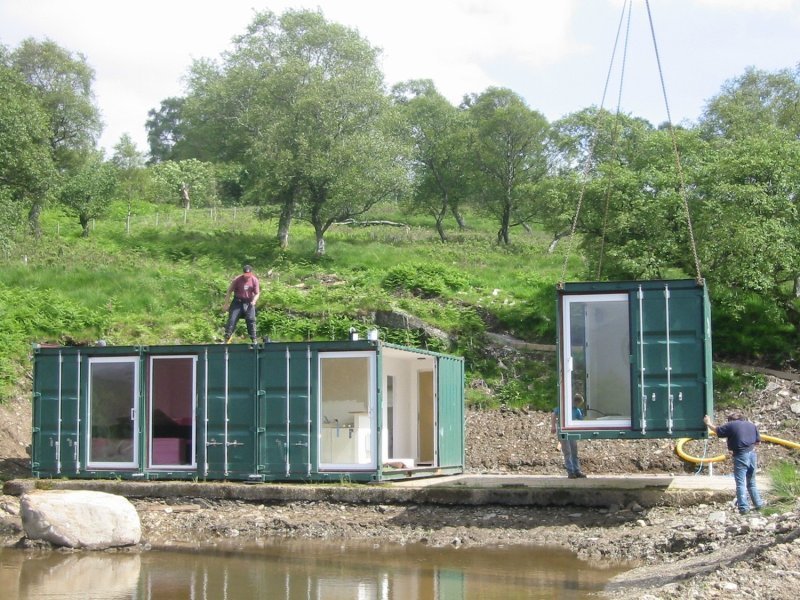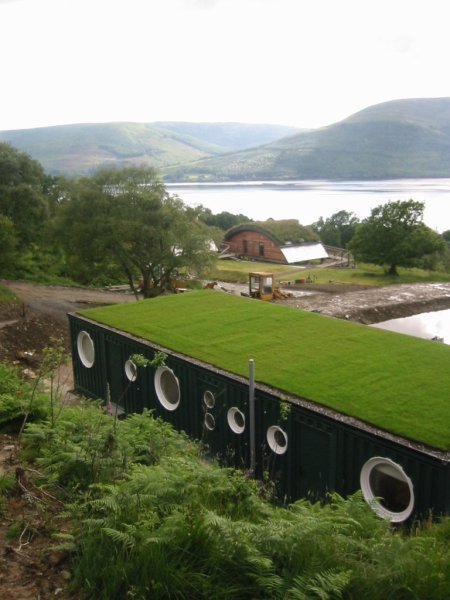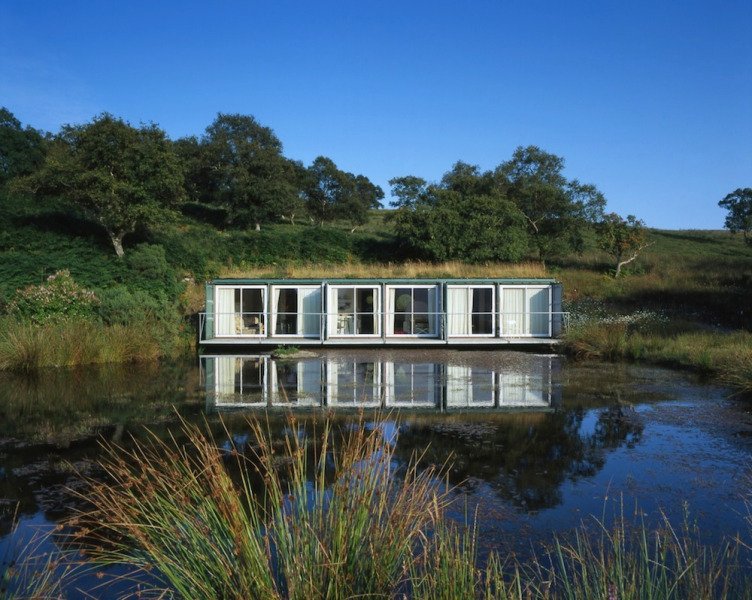Set above the calm waters of Loch Long, Cove Park Scotland represents a landmark in shipping container architecture. Designed as an eco-friendly shipping container artist retreat in Scotland, it transforms repurposed shipping containers into creative live/work spaces for artists. Built with efficiency and environmental care, Cove Park highlights the potential of modular design in rural settings.
Compact Architecture with Minimal Impact
The first phase, completed in 2002 by USM Ltd., introduced three residential “cube” units. Each used two 8’ x 20’ recycled shipping containers. The compact design included a small kitchen, sitting area, bedroom, and bathroom. Generous sliding glass doors opened each unit to views of the loch and private balconies. Circular porthole windows added natural light and character.
This early Cove Park shipping container retreat was installed in just four days. The team avoided disruptive excavation by building on former bomb-store platforms. This approach minimized material use and preserved the land’s natural contours.
To reduce visual impact, the team added green roofs that merged with the hillside. The units’ exteriors, painted dark green, further softened the transition between structure and landscape.
Expanding the Creative Landscape
In 2006, Cove Park expanded. Six new containers formed three additional artist residences and three studio spaces. These retained the original minimalist approach but introduced key upgrades. Each studio had level access and sliding doors that led to a balcony over a small pond. Studio 2 included an 80-litre kiln. Studio 3 offered a dedicated toilet space.
This expansion aligned with the retreat’s growing reputation as a premier destination for artist residencies in Scotland. It also demonstrated the continued adaptability of shipping container architecture for modular, flexible living.
Ecology and Engineering: Local Knowledge at Work
The design team collaborated closely with land manager and falconer David Crosthwaite. His insights shaped the retreat’s layout and ecological strategies. Aware of the site’s military history, he advised reusing existing foundations and avoiding heavy concrete. His approach addressed radiation concerns and reduced environmental disruption.
Working with drainage consultant Gordon Miller, the team created a sustainable wastewater system. They planted local species to process runoff from a discreet bio-disk sewage unit. What began as a drainage challenge evolved into a year-round nature pond and living garden.
Argyll and Bute had strict development controls at the time. To gain approval, the architects proposed a one-for-one replacement: removing outdated military structures and replacing them with an equal container volume. This overcame a local “presumption against residential development” and set a precedent for creative land reuse.
Initially, the clients—Peter and Eileen Jacobs—explored ambitious stacking and asymmetrical layouts. However, the team opted for a simpler solution. They arranged six containers in a southwest-facing terrace on an existing slab. This layout reduced costs and maintained a clean visual line beside the loch.
Architectural Restraint with Emotional Resonance
Cove Park’s design avoids excess. The containers became elegant in their simplicity. Each “cube” served its purpose—no more, no less. Turf roofs, reflective water, and dark-painted exteriors allowed the retreat to blend into its setting.
Residents often recall the doves of peace cared for by Crosthwaite. These birds flew overhead as artists arrived or left, echoing Benno Schotz’s sculpture Boy and Dove. Their presence added a quiet symbolism to a place already steeped in stillness and reflection.
A Model for Shipping Container Artist Retreat
Today, Cove Park Scotland continues to inspire architects and creatives alike. As a shipping container artist retreat, it exemplifies how recycled materials, modular design, and ecological sensitivity can coexist.
The retreat’s story is one of innovation, adaptation, and restraint. It demonstrates how shipping container architecture can support artistic vision while respecting the land. Through careful planning and local collaboration, Cove Park transformed a military relic into a thriving sanctuary for creative work.
Courtesy Of: OpenArchitectureNetwork



















Join the conversation on sustainable living — comment by